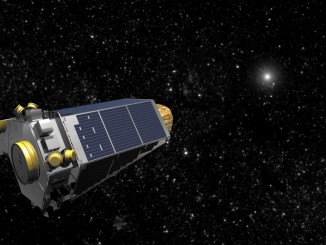
Parkes joins the Green Bank Telescope (GBT) in West Virginia, USA, and the Automated Planet Finder (APF) at Lick Observatory in California, USA, in their ongoing surveys to determine whether civilisations elsewhere have developed technologies similar to our own. Parkes radio telescope is part of the Australia Telescope National Facility, owned and managed by Australia’s Commonwealth Scientific and Industrial Research Organisation (CSIRO).
Drawing on over nine months of experience in operation of the dedicated Breakthrough Listen instrument at GBT, a team of scientists and engineers from the University of California, Berkeley’s SETI Research Center (BSRC) deployed similar hardware at Parkes, bringing Breakthrough Listen’s unprecedented search tools to a wide range of sky inaccessible from the GBT. The Southern Hemisphere sky is rich with targets, including the centre of our own Milky Way galaxy, large swaths of the galactic plane, and numerous other galaxies in the nearby universe.
“The Dish” at Parkes played an iconic role in receiving the first deliberate transmissions from the surface of another world, as the astronauts of Apollo 11 set foot on our Moon. Now, Parkes joins once again in expanding human horizons as we search for the answer to one of our oldest questions: Are we alone?
“The Parkes Radio Telescope is a superb instrument, with a rich history,” said Pete Worden, Chairman of Breakthrough Prize Foundation and Executive Director of the Breakthrough Initiatives. “We’re very pleased to be collaborating with CSIRO to take Listen to the next level.”
With its new combined all-sky range, superb telescope sensitivity and computing capacity, Breakthrough Listen is the most powerful, comprehensive, and intensive scientific search ever undertaken for signs of intelligent life beyond Earth.
Moreover, this expansion of Breakthrough Listen’s range follows the announcement on 12 October that it will be joining forces with the new FAST telescope — the world’s largest filled-aperture radio receiver — to coordinate their searches for artificial signals. The two programs will exchange observing plans, search methods and data, including the rapid sharing of promising new signals for additional observation and analysis. The partnership represents a major step toward establishing a fully connected, global search for intelligent life in the universe.
“The addition of Parkes is an important milestone,” said Yuri Milner, founder of the Breakthrough Initiatives, which include Breakthrough Listen. “These major instruments are the ears of planet Earth, and now they are listening for signs of other civilisations.”
First light focused on exo-Earth
After 14 days of commissioning and test observations, first light for Breakthrough Listen at Parkes was achieved on 7 November, with an observation of the newly-discovered Earth-size planet orbiting the nearest star to the Sun. Proxima Centauri, a red dwarf star 4.2 light-years from Earth, is now known to have a planet (“Proxima b”) within its habitable zone — the region where water could exist in liquid form on the planet’s surface. Such “exo-Earths” (habitable zone exoplanets) are among the primary targets for Breakthrough Listen.
“The chances of any particular planet hosting intelligent life-forms are probably minuscule,” said Andrew Siemion, director of UC Berkeley SETI Research Center. “But once we knew there was a planet right next door, we had to ask the question, and it was a fitting first observation for Parkes. To find a civilisation just 4.2 light-years away would change everything.”
As the closest known exoplanet, Proxima b is also the current primary target for Breakthrough Listen’s sister initiative, Breakthrough Starshot, which is developing the technology to send gram-scale spacecraft to the nearest stars.
“Parkes is one of the most highly cited radio telescopes in the world, with a long list of achievements to its credit, including the discovery of the first ‘fast radio burst.’ Parkes’ unique view of the southern sky, and cutting-edge instrumentation, means we have a great opportunity to contribute to the search for extra-terrestrial life,” said Douglas Bock, Director of CSIRO Astronomy and Space Science.



